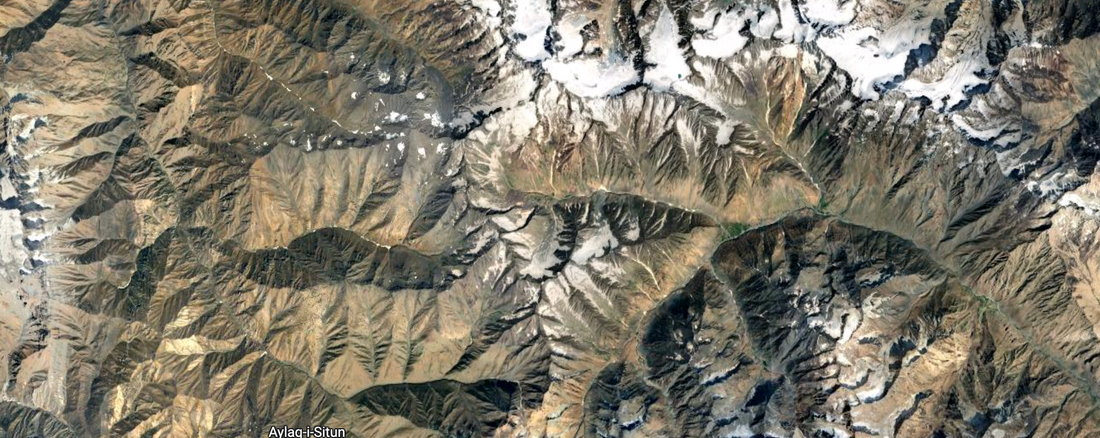A path less travelled
After months of planning, our mixed gender team of volunteers travelled to Afghanistan to log some of the remaining trekking routes in the Afghan Pamir. Studio D’s long term goal is to support socio-economic development of mountainous communities in the region though adventure tourism, and the Mapping the Afghan Pamir (MAP) project.
Three weeks prior to arrival the Wakhan Corridor and the Afghan Pamir was closed to foreigners. The reasons remain opaque, although it is likely due to a combination of an active border dispute with Pakistan, and the summer opening of a dirt road border crossing with China—a geo-political first in these nations’ history.
It didn’t take us long to spin up alternative expedition options—in the northern areas of the Hindu Kush and Nuristan—and we settled for an undocumented valley system emanating out of Lake Shiva, Badakhshan. We anticipated a 10-day trek, carried supplies for up to 17-days in the wilderness.
We categorise this as a frontier trek, as in:
- A few trails, dirt roads and settlements were marked on OSM/Google Maps,
- On some days no known trails were marked and it was an open question what we would find—particularly pertinent for water sources given the time of year and having pack animals to hydrate,
- Our preferred route-logging app, GAIA, helped us gauge the feasibility of preferred and alternative routes, but these needed to be reassessed on the ground, and adapted as required,
- Exfil options would require a maximum of four-days to the nearest clinic should any team member require attention beyond the capabilities of our Wilderness First Responder certified team member.
Tackling a frontier trek requires a coherent team with an adaptable expedition mindset. Most of the team were juggling: their first visit to Afghanistan with preconceptions of the country and its Taliban government; taking on an open-ended multi-day frontier trek; extended time spent between 3000-4000m; navigating social dynamics with team members they’ve met in person for the first time; and—most importantly, owning the outcomes of decisions they made. As such, our investment in each other and the adoption of day-to-day protocols that emphasised team wellbeing served us well.
The net result was an eight person team (four locals and four international), completing a nine-day trek, in good spirits and reasonable health. We called the end of the trek once we encountered extensive gold mining operations—a jarring sight after the tranquility of the remote valley system. Happily, our local partners now have a new trekking route to offer to adventure tourists.

On most of our route we followed ancient herder and hunter trails. Along the way our medic provided considerable support in remote communities, and excess supplies were donated to remote settlements as they prepared for the coming winter snows.
As part of the documentation process we asked inhabitants of remote settlements “When is the last time you saw a foreigner here?”. On eight of the nine days the response was “You are the first”, with a single sighting of a foreigner supporting the development of a village’s irrigation system twenty years prior.
With a few spare days we spent a few days in Kabul and Mazar-i-Sharif before crossing the land-border back into Dushanbe for our debrief and departure.
How has Afghanistan changed since the 2023 expedition? From what we experienced the Taliban security services were less twitchy than last year, and they emphasised welcoming and providing security for mixed gender foreign visitors—with an oft-repeated. "We are here to protect you". A bomb went off in Kabul the day before we arrived, killing ten (which went largely unreported outside the country), but the overall level of destabilising activity is down compared to last year (the statistical per-capita chance of a violent death is probably higher in the US than Afghanistan).
Women's rights continue to be severely suppressed by the Taliban government, with an increase in domestic violence and suicides, alongside anecdotal religious persecution.
The question of whether to travel to Afghanistan remains one we are open to explore—namely whether our presence does more harm than good. Based on numerous interactions with mixed gender locals and the progress for the mapping project, we'll be back in 2025. The Afghan Pamir reopened to foreigners earlier this week.
//
See also, the write-up of the 2023 Afghan Pamir Expedition. Thank-you to the team of FE, DO, TN, MD, AM, our local guides and herders, and KM, GS, SK and SH for the remote support. More photos here.
